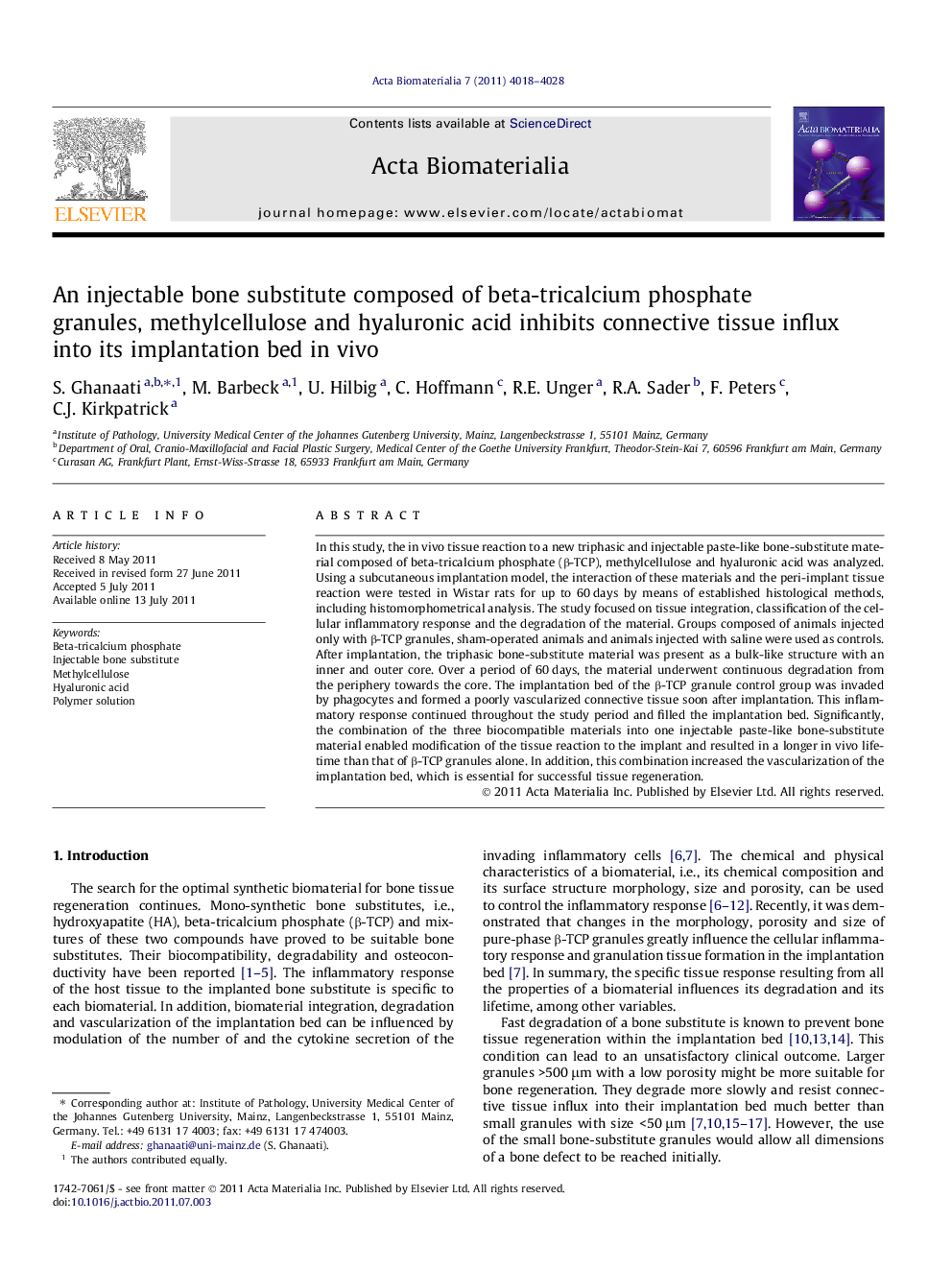| Article ID | Journal | Published Year | Pages | File Type |
|---|---|---|---|---|
| 1049 | Acta Biomaterialia | 2011 | 11 Pages |
In this study, the in vivo tissue reaction to a new triphasic and injectable paste-like bone-substitute material composed of beta-tricalcium phosphate (β-TCP), methylcellulose and hyaluronic acid was analyzed. Using a subcutaneous implantation model, the interaction of these materials and the peri-implant tissue reaction were tested in Wistar rats for up to 60 days by means of established histological methods, including histomorphometrical analysis. The study focused on tissue integration, classification of the cellular inflammatory response and the degradation of the material. Groups composed of animals injected only with β-TCP granules, sham-operated animals and animals injected with saline were used as controls. After implantation, the triphasic bone-substitute material was present as a bulk-like structure with an inner and outer core. Over a period of 60 days, the material underwent continuous degradation from the periphery towards the core. The implantation bed of the β-TCP granule control group was invaded by phagocytes and formed a poorly vascularized connective tissue soon after implantation. This inflammatory response continued throughout the study period and filled the implantation bed. Significantly, the combination of the three biocompatible materials into one injectable paste-like bone-substitute material enabled modification of the tissue reaction to the implant and resulted in a longer in vivo lifetime than that of β-TCP granules alone. In addition, this combination increased the vascularization of the implantation bed, which is essential for successful tissue regeneration.
